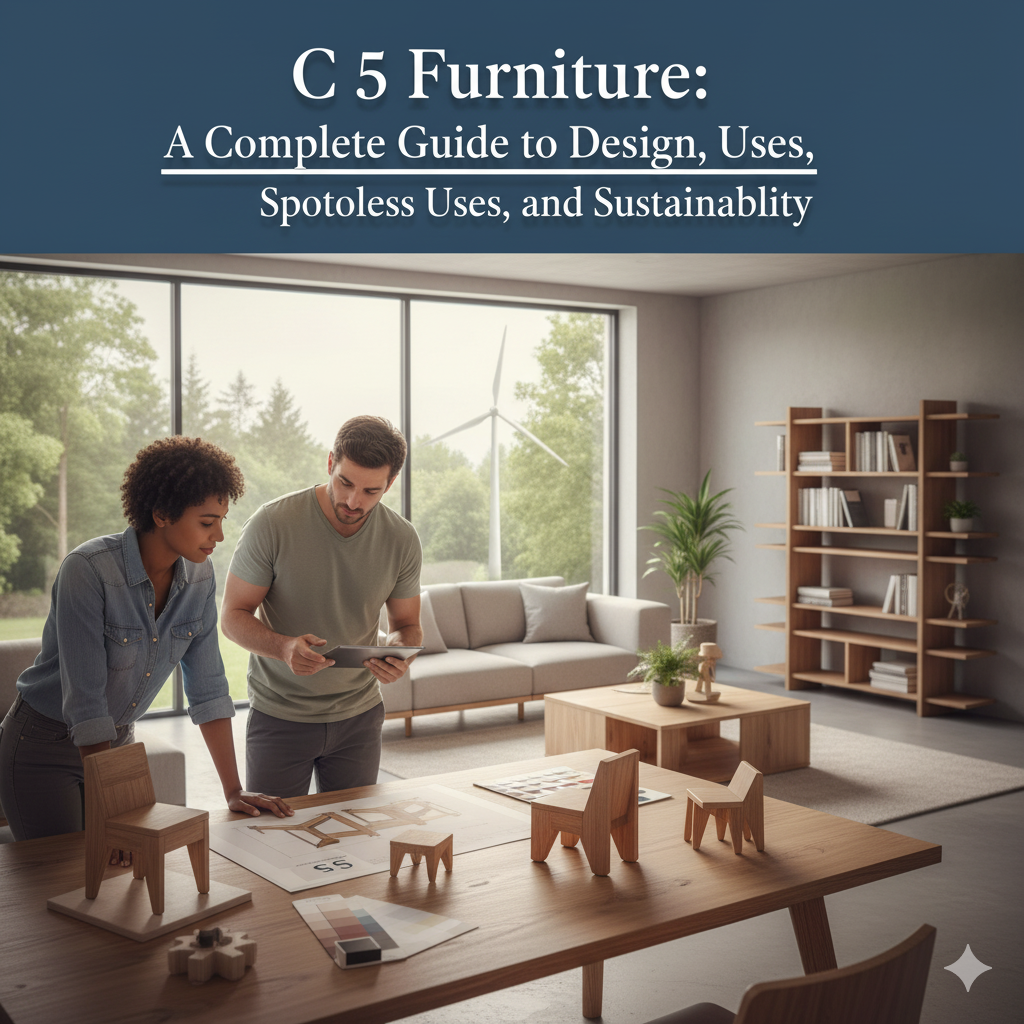Understanding C 5 Furniture
Furniture is more than utility; it’s an expression of design, culture, and lifestyle. Among the wide variety of choices available, C 5 furniture has carved a niche for itself thanks to its unique construction, evolving designs, and adaptability for both residential and commercial environments. This article explores everything from the history of C-5 furniture to buying tips, applications, and sustainability practices, making it your complete guide.
Overview and History of C-5 Furniture
The history and evolution of C-5 furniture reflect advancements in both craftsmanship and materials. Initially built with heavy wood structures, C-5 designs have since embraced modern composites and eco-friendly alternatives. Over the years, manufacturers adapted designs to meet changing lifestyles, transforming C-5 furniture from a functional staple into a style statement.
A deep dive into the history of C-5 furniture shows how traditional woodworking evolved with industrial technology and sustainable practices.
Design Features and Materials Used
C-5 furniture is renowned for its:
-
Durability: Built with strong hardwoods, engineered boards, or metals
-
Versatility: Suitable for living rooms, offices, and public spaces
-
Aesthetics: Balances minimalism with practicality
Top materials used in C-5 furniture construction include oak, teak, recycled metals, bamboo, and sustainable fabrics.
Compared to other furniture types, C-5 furniture often emphasizes functionality without sacrificing elegance.
Types and Variants of C-5 Furniture
Modern spaces require different solutions, and types of C-5 furniture cover a wide spectrum:
-
Residential Furniture: Sofas, beds, dining sets
-
Office Furniture: Desks, ergonomic chairs, conference tables
-
Public-Space Furniture: Benches, modular seating, collaborative units
Design trends in C-5 furniture are moving toward modular, space-saving options, making them ideal for urban apartments.
The future of C-5 furniture design is expected to include smart features, recyclable materials, and AI-driven customization.
Buying and Selecting C-5 Furniture
Choosing the right piece requires careful consideration.
Factors to consider when buying C-5 furniture:
-
Purpose: Residential, office, or commercial
-
Budget: Prices can vary from affordable options to luxury collections
-
Authenticity: Check certifications and supplier reputation
-
Durability: Materials and construction quality
Price range and budgeting for C-5 furniture:
-
Entry-level: £200–£500 (small items)
-
Mid-range: £600–£2,000 (sofas, beds, dining sets)
-
Premium: £3,000+ (designer and custom collections)
Our C-5 Furniture UK platform offers authentic products tailored to all budgets.
For credibility, the British Furniture Confederation provides resources on industry standards and quality checks.
Uses and Applications of C-5 Furniture
Residential Uses: Enhances comfort and aesthetics in bedrooms, living areas, and kitchens.
Commercial Uses: C-5 office furniture improves productivity and ergonomic comfort.
Public Spaces: Durable designs work well in airports, libraries, and waiting lounges.
Case studies show how C-5 furniture in office environments has boosted collaboration, while in public spaces, modular seating has increased functionality.
Maintenance, Care, and Sustainability
Proper maintenance can extend the lifespan of your furniture:
-
Cleaning: Use gentle cleaners for wood, microfiber cloths for metals
-
Repair: Simple DIY restoration tips like sanding and re-varnishing keep pieces fresh
-
Upkeep: Regular inspections prevent long-term damage
Sustainability and eco-friendly practices:
-
Opt for C-5 furniture made from recycled or reclaimed wood
-
Support brands that adopt eco-friendly production methods
-
Extend usability by recycling or upcycling old pieces
The environmental impact of C-5 furniture production is significant, but sustainable choices like bamboo and reclaimed timber reduce your carbon footprint.
Comparing Prices: Is C-5 Furniture Worth the Investment?
While C-5 furniture may cost more upfront than mass-market alternatives, the durability, style, and eco-friendly production often justify the investment. Quality materials and timeless designs ensure long-term value, making it a smarter financial and environmental choice.
Conclusion
C 5 furniture is more than just a home or office accessory—it represents quality craftsmanship, modern design, and sustainable living. From its history and evolution to practical applications and buying tips, C-5 furniture remains a top choice for homeowners, designers, and businesses alike. By investing wisely, maintaining pieces properly, and supporting eco-conscious production, you ensure your furniture adds both style and longevity to your space.

Leave a Reply